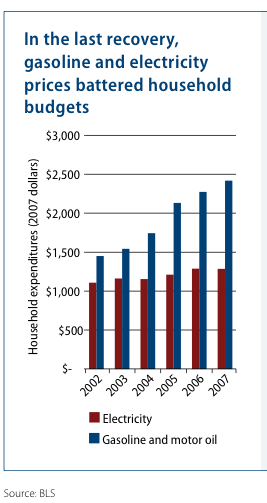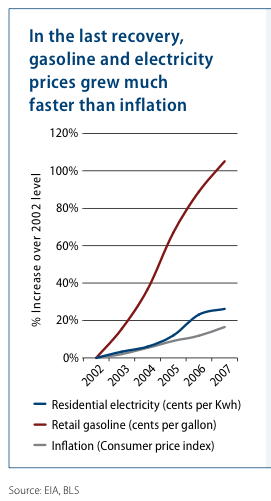
MEMO TO THE MEDIA: The nation’s energy and climate problems have reached the point where obstructionist politicians cannot be given a free pass to simply criticize those attempting to solve those problems while offering no credible alternatives or business-as-usual policies.
At 11:30 ET, Senators Boxer and Kerry (and others) will introduce the Clean Energy Jobs and American Power Act on the steps of the U.S. Capitol. For the cost of about a postage stamp a day per U.S. household, the bill would generate millions of clean energy jobs, while preserving and protecting clean air, clean water, and a livable climate.
At 2:45 ET, Senator Inhofe and other GOP Senators will hold a “Press Availability on Boxer-Kerry Energy Tax” in Senate Radio-TV Gallery S-325. But in fact, it is Senate conservatives who are pushing the really big tax on Americans — a double tax, really, since doing nothing on climate and clean energy is the one certain way to ensure
- Our energy bills soar just as they did under the do-nothing policies of George W. Bush and the conservative-led Congress and
- Our children are saddled with the staggering cost of desperately trying to adapt to catastrophic global warming.
We know that if the final energy and climate bill that hits Obama’s desk retains the energy-saving provisions of the House bill, it could save $3,900 per household by 2030 and would cut the U.S. foreign oil bill $650 billion through 2030, saving $5,600 per household.
The only existing GOP energy proposal, the American Energy Act (AEA), is nothing more than a good old-fashioned 25% energy tax on consumers (see here). The GOP plan — or doing nothing at all, as the GOP Senators will apparently propose today — means no savings from energy efficiency, no stop to soaring oil prices and a soaring trade deficit in oil when the economy and petroleum price rebound. It means no effort to preserve a livable climate. In short, it is just Cheney-lite, if it’s possible to be lighter than the Cheney energy plan.
What are the benefits to our children of not destroying their livable climate, of averting 10°F warming over much of this country and 5+ feet of sea level rise by century’s end, of not turning the oceans into a large, hot, acidified dead zone?
 York University School of Law’s Institute for Policy Integrity published a recent analysis that found the “clean air, clean water, clean energy jobs bill creates $1.5 trillion in benefits.” But that was at a low societal cost of carbon. For a more reasonable estimated cost of the impacts of carbon dioxide, say, $68, they estimated the total cumulative net benefit of climate action is $4 trillion (see Chart 2, page 31 here). And that didn’t even include an analysis of the plausible worst-case scenario for global warming, which we now know is 13-18°F over most of U.S. and 27°F in the Arctic in 50 years!
York University School of Law’s Institute for Policy Integrity published a recent analysis that found the “clean air, clean water, clean energy jobs bill creates $1.5 trillion in benefits.” But that was at a low societal cost of carbon. For a more reasonable estimated cost of the impacts of carbon dioxide, say, $68, they estimated the total cumulative net benefit of climate action is $4 trillion (see Chart 2, page 31 here). And that didn’t even include an analysis of the plausible worst-case scenario for global warming, which we now know is 13-18°F over most of U.S. and 27°F in the Arctic in 50 years!
In fact, a more rigorous new analysis by top “scientists led by a former co-chair of the Intergovernmental Panel on Climate Change” found the “net present value of climate change impacts” of $1240 TRILLION on current emissions path, making mitigation to under 450 ppm a must.
Doing nothing thus imposes an unimaginable burden — a multi-trillion dollar carbon pollution tax — on our children and grandchildren.
A do-nothing energy policy also means higher energy bills in the next decade, just as it did in the last one. In April, the Center for American Progress (CAP) released a detailed analysis showing the main result of the Bush-Cheney plan was that energy costs rose more than $1,100 for the average American household:
Over this period, the typical annual American household expenditure on electricity rose more than $170, and the typical annual American expenditure on gasoline rose more than $960 (in 2007 dollars). Note that the gasoline price increases listed here do not include the unprecedented $147 per barrel of oil and $4.11 gasoline prices that occurred in the summer of 2008.
Here is more of CAP’s analysis of the impact on Americans of the failed conservative energy policies of the last decade:
America needs to invest in a diverse clean energy economy now instead of doubling down on dirty energy. The recession and the low prices of gasoline and electricity provide an opportunity to ensure the next period of economic growth is not like the last one.
Economic growth under Bush lasted from November 2001—when the United States emerged from the first Bush recession—to December 2007— the beginning of the second Bush recession, according to the National Bureau of Economic Research, which tracks and measures business cycles.
Over Bush’s period of economic growth, expenditures on electricity for a typical American family (earning the median inco
me) grew 16 percent to $1,285 in 2007, up from $1,106 per year in 2002, an increase of $179. The typical family’s expenditure on gasoline grew nearly 70 percent to $2,418 in 2007, up from $1,450 in 2002, an increase of nearly $1000 (All dollar amounts in inflation-adjusted 2007 dollars.)
The price of gasoline and home electricity grew faster then general inflation because of the lack of diversity in our energy system and spiraling global demand for fossil fuels: 1.6 times faster in the case of residential electricity and a staggering 6.4 times faster in the case of gasoline.
These price spikes occurred despite the Bush administration’s massive public subsidies for dirty energy. The 2005 energy bill contained a token level of investment in renewable energy, but it also provided billions of dollars of support for dirty energy, offering $27 billion in subsidies for coal, oil, and nuclear energy.
Although the current recession has dragged down gas prices from the record $4.11 per gallon of July 2008, gas prices still averaged $2.01 in March 2009, up 67 percent from a $1.28 average in March of 2002. The fundamentals that created the huge increases in oil and electricity prices from 2002 through the summer of 2008—after the recession officially began but before demand plummeted worldwide—still lurk, and will return with a vengeance once the global economy begins to rebound.
Doing nothing is the most costly option.



